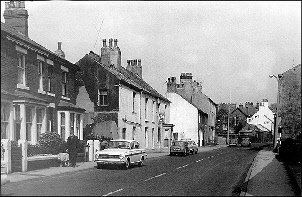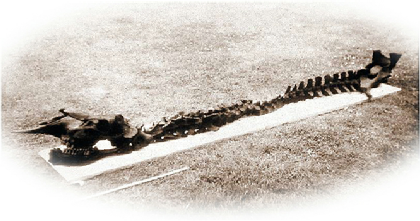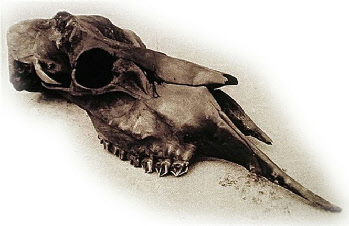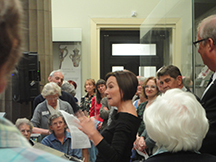
APRIL 2024
A new branch of Wetherspoons opened in Poulton on December 17th 2013. The Evening Gazette asked for suggestions for a name. Originally a pub called The Wheatsheaf had stood on the site and this was a popular suggestion, but finally ‘The Poulton Elk’ was chosen.
Nothing remains of the Wheatsheaf apart from a description of the property written
in the 1930s. The inn was run by Richard Parkinson, a malster, during the early
19th century. When Richard, his wife and eldest son died in the 1850s the inn became
a private home -
Lindum Terrace was built in 1896 on part of this land. The old pub later became the telephone exchange, then the Comrades Club.


The Wheatsheaf
becomes The Poulton Elk
THE FIND
One Friday afternoon in August 1970 Mr Scholey, who lived on Blackpool Road, opposite what is now the Sixth Form College, decided to look in the hole being dug with a JCB in the piece of land next to his house. What happened next went down in history and is of international significance.
Mr Scholey went back to his house and told his wife he had found some bones..............
An article appeared in the Guardian newspaper about the find and work began by professional archaeologists to carry out an excavation.
As the bones were revealed they were laid out in the Scholey’s garden.
Two houses now stand on the land on Blackpool Road Carleton where a house was to be built in 1970.

THE EVIDENCE
Eventually when most of the skeleton had been retrieved the neighbours were invited
in to see them. Later Mrs Scholey was amazed to see one of the neighbours walking
off down the road with a bone under his arm -
Where should the elk -
In 2012 Horace was displayed in the new Discover Preston room opened by Amanda Vickery.
The fact that barbs were found near by and some leg bones appear to have marks possibly caused by these suggest the animal was hunted for food, but escaped onto slightly higher ground. Several field names around the site have ‘mere’ and ‘marsh’ in them indicating that the land would have been very boggy.
The bones have recently been re-
The Poulton le Fylde Historical & Civic Society was delighted to be asked by LCT INTERIOR SOLUTIONS Ltd to provide a series of photographs of old Poulton and text to go with them. These can now be seen on the walls of Wetherspoons, together with various paintings and art installations.
THE CARLETON ELK


